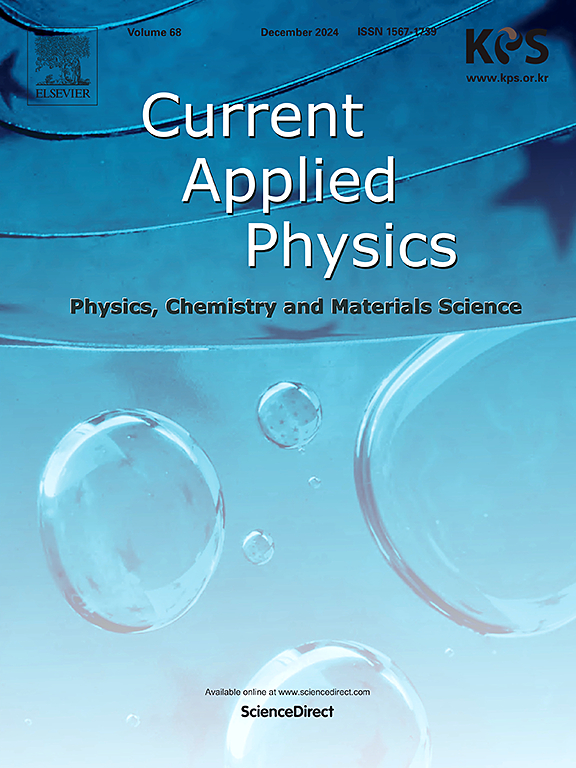Precise analysis of electrical properties in MoS2 devices via H-TFSI ion reactions
IF 3.1
4区 物理与天体物理
Q3 MATERIALS SCIENCE, MULTIDISCIPLINARY
引用次数: 0
Abstract
The effectiveness of bistriflimide (H-TFSI) treatment and its reaction mechanisms for improving device performance in MoS2 devices are investigated. The H-TFSI solution contains both H cations and TFSI anions, which interact with MoS2 device. In monolayer MoS2 FETs, H-TFSI reaction residues are adsorbed on the channel surface as p-doping agents and scattering centers, leading to performance degradation. In multilayer MoS2 FETs, the centroid of the channel charge is located near the gate oxide, allowing the impact of H+ ion reactions on device performance to be examined without the influence of surface-adsorbed H-TFSI residues. Electrical hysteresis analysis and low-frequency noise modeling were performed on two types of multilayer MoS2 devices with the same structure, which exhibited contrasting outcomes―performance enhancement and degradation―following H-TFSI treatment. Additionally, comprehensive analysis, including the electrical property changes after H+ insertion promotion and acetone rinsing, provides insights into the correlation between device performance variations and the underlying mechanisms.

通过H-TFSI离子反应精确分析MoS2器件的电学特性
研究了双striflimide (H-TFSI)处理MoS2器件的效果及其改善器件性能的反应机理。H-TFSI溶液包含H阳离子和TFSI阴离子,它们与MoS2器件相互作用。在单层MoS2 fet中,H-TFSI反应残留物作为p掺杂剂和散射中心吸附在通道表面,导致性能下降。在多层MoS2 fet中,通道电荷的质心位于栅极氧化物附近,允许在不受表面吸附H- tfsi残留物影响的情况下检查H+离子反应对器件性能的影响。对两种具有相同结构的多层MoS2器件进行了电滞回分析和低频噪声建模,结果表明,经过H-TFSI处理后,两种器件的性能有所提高和降低。此外,综合分析,包括H+插入促进和丙酮冲洗后的电学性能变化,为器件性能变化与潜在机制之间的相关性提供了见解。
本文章由计算机程序翻译,如有差异,请以英文原文为准。
求助全文
约1分钟内获得全文
求助全文
来源期刊

Current Applied Physics
物理-材料科学:综合
CiteScore
4.80
自引率
0.00%
发文量
213
审稿时长
33 days
期刊介绍:
Current Applied Physics (Curr. Appl. Phys.) is a monthly published international journal covering all the fields of applied science investigating the physics of the advanced materials for future applications.
Other areas covered: Experimental and theoretical aspects of advanced materials and devices dealing with synthesis or structural chemistry, physical and electronic properties, photonics, engineering applications, and uniquely pertinent measurement or analytical techniques.
Current Applied Physics, published since 2001, covers physics, chemistry and materials science, including bio-materials, with their engineering aspects. It is a truly interdisciplinary journal opening a forum for scientists of all related fields, a unique point of the journal discriminating it from other worldwide and/or Pacific Rim applied physics journals.
Regular research papers, letters and review articles with contents meeting the scope of the journal will be considered for publication after peer review.
The Journal is owned by the Korean Physical Society.
 求助内容:
求助内容: 应助结果提醒方式:
应助结果提醒方式:


